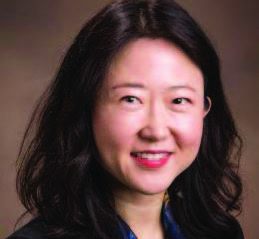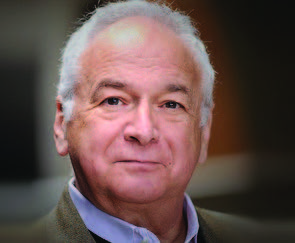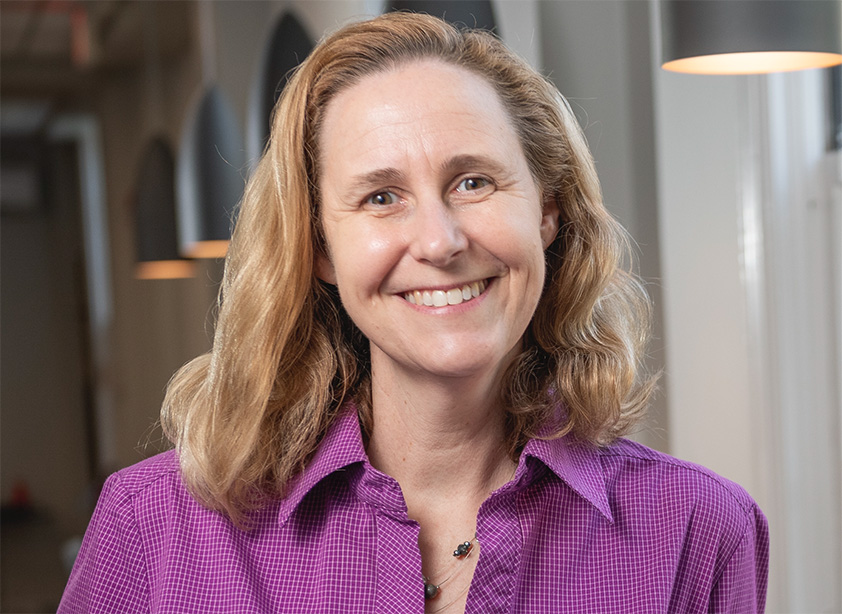By Anna de Sant’Anna
Citizen journalism is described in the dictionary as “the collection, dissemination, and analysis of news and information by the general public, especially by means of the internet.” But in reality, the term is arbitrary, it differs from perspective to time or even ramifications – which have both pros and cons.
Deborah Chung, a journalism professor at the University of Kentucky, believes citizen journalism has both positives and negatives in different aspects. “We need to understand that citizen journalism is really multifaceted, multi-dimensional, multi-level and also multimodal. And so it can mean a lot of things to different kinds of people,” she said.

This collaborative type of media is not new, as some people may think, but before the internet, letters to the editor or audience engagement were mostly the ways it would happen. With the worldwide web, we saw a prominent rise. The audience is not only sending their opinion or additional information to mainstream media companies, they’re now covering and writing the stories by themselves to share on their blog, Instagram, Twitter or any other platform.
In Chung’s research article “Conceptualizing citizen journalism: US news editors’ views,” the U.S. daily news editors’ understanding of citizen journalism was analyzed. It identified a total of 10 ideas related to the complexity of the topic, examining the response of journalists with different roles, audiences and behavioural practices.
With these journalists in different functions and from variable backgrounds, Chung found that “those who were non-white, those who’re younger, those with more online experience as a journalist, and those at an organization with smaller staff sizes, but larger in technology-related staff, are more likely to have these complex definitions of citizen journalism practices. And I think it’s perhaps because those folks thought about it. So more, if you look at just the blogging itself, it points to how it has been a more participatory platform for marginalized individuals.”
But it doesn’t mean one is more right than the other, as mentioned before, it has both positives and negative sides. Chung also agreed.
“We have really good investigative professional journalists, but citizens are also able to contribute content that the professional journalists maybe can’t – either because of location or language barrier. We never know when a breaking news story is going to happen, and professional journalists can’t be there all the time,” she said.
“I really feel like it’s kind of like a balance, where it can work things out together. But we can only do that if we recognize each other’s strengths and are willing to work together collaboratively.”
Which for Jeffrey Dvorkin is right to some extent. The former managing editor and chief journalist at CBC Radio, now professor and director of the journalism program at the University of Toronto, sees the value in that apprenticeship approach to journalism.

“Citizen journalism, in reality, has no apprenticeship, it’s just if you want to do it, you do it. Traditional media means that you have to learn the craft of journalism, which in my opinion, is not a profession. It is tradecraft,” Dvorkin said.
He believes that when you practice the trade, you get better as you go along. But graduating from journalism school isn’t exactly what makes a journalist.
“It is producing content that people find interesting and valuable,” Dvorkin said.
In journalism school, students are taught multiple crafts that can be used in their favour, but, most importantly, how to write news without demonstrating their true opinion, showing both sides impartially.
In Dvorkin’s opinion, with the rise of social media, people will do their own thing to advocate for their issues – the issues being valuable or not. A good example is the anti-vax movement, where people write their own opinion about the COVID-19 vaccine and believers share it as if it was written by a credible expert.
“There’s no verification that goes on with a lot of citizen journalism. People put out a claim about vaccines or conspiracies, and they may be quite convincing in their arguments, but there’s no verification behind it,” Dvorkin said.
“The missing link in citizen journalism is the absence of verification and is verification that gives journalism its credibility.”
Because of the double standards, multiple stories covered by citizen journalism that are valuable and verified, such as the #MeToo movement and Black Lives Matter, are looked past because they’re not covered by big media companies.
Michael Karapita is a journalism professor at Humber College, with more than 25 years spent working as a journalist. Even though he sees more negative than positive aspects of citizen journalism, there’s still a responsibility to sharing news.
“Immediacy, transparency, and democratization of information sharing. And playing a vital, powerful role in letting the world know right away when something has happened, perhaps something that in another age without the power of the technology that we all have in our pockets. At another age, that incident may never have been reported.”
In cases like these two, citizen voices are very important. Someone like a journalist, who becomes a mini expert by studying and researching, would do a good story, But an individual who was living through this moment, has more impact and information that a degree can’t give.
Kirsten Johnson, a professor in the Department of Communications at Elizabethtown College in Pennsylvania, notes that being able to share your story like this is “good for a democratic system and a democratic government, to have people really involved in their community.”
But there are ways for citizen stories to be considered credible. In Johnson’s article about Perceiving Credibility of Citizen Journalism in Websites, the author found out citizens’ published stories with hyperlinks and personal information are more likely to be considered believable by readers.
“Those are great things that, you know, really every citizen journalist should have in articles that they write. And I’ve also looked at social media, so citizen journalists who would be posting on social media, and providing personal information about yourself actually help to increase perceived credibility,” Johnson said. “So if people realize you’re more than just a journalist, you’re also a mom, or you like to play volleyball or whatever it is. Those kinds of things also help improve perceived credibility.”
Another ramification of journalism related to this area is fake news. Citizen journalism is not responsible for the growth of fake news but has a role to play in advocating for fake news because no verification goes on with a lot of citizen journalism.
“Not being accurate, not getting people’s names and titles, right,” Karapita said. “Not getting your facts right and not having a fact-checker, a secondary person saying, ‘excellent information, but let’s double-check and make sure it’s right.’”


While journalists ideally report what is “known and unknown,’’ they also fix mistakes as soon as they happen or as fast as possible. Since journalists are human, mistakes happen. That’s why they check, double check, and triple check to make sure that the story provides a balance, at least to a fair degree.
A professional journalist might be given the time to become a mini expert on multiple subjects such as business, politics or climate change. And by being an expert, that entails studying, researching and interviewing. This was the case of Emma McIntosh last year, the environmental investigative reporter spent months researching a topic to write an article, to in the end have it shared by a different person as hers. McIntosh believes the blame falls partially on the company, Tik Tok, and their lack of verification.
“While doing my casual coffee break and scroll through Tik Tok, happened upon this video of a person that was talking about some of Doug Ford’s highway projects, which has been some of the work that I’ve spent the most time on over the last year,” she said.
At first, she was happy because she loves when people pick up the story and use it on a different platform to give more exposure or reach a different audience.
However, she got frustrated.
“The person kind of explained it wrong,” McIntosh said. “They mixed it in with a bit of speculation that could kind of veer into the conspiracy theory territory. And then my least favourite part was that they credited reporting that I did to a different news outlet, a news outlet that had summarized my reporting, and did credit me but this person credited it to that other outlet. And in the video comments, people were saying “send this to the media, send this to the press.”
But, as mentioned, citizen journalism has multiple definitions, and if we’re considering Johnson’s definition, it takes more than just a single person who posts things online to be considered journalism. It’s not actually citizen journalism, only people with some journalistic merit to what they’re posting can be considered that.
Fake news comes with the lack of media literacy, which allows people to critically evaluate and create content. Media literacy may be the most important thing that should be taught today in schools. Children in many parts of the world, from a very early age, have devices in their hands, and they’re already getting information, which they should be able to understand and separate false from true.
“We want to create critical thinkers about the media. And we want to create resilient citizens of the world who are less vulnerable to fake news. We want to create people who are strong, can stand on their own two feet, or can look at I don’t want to see stand on my own two feet. That is not that’s disabled so who can feel confident that they are not going to fall prey to fake news. So now, media literacy is super important,” Karapita said.
The public needs help from journalists to understand what is real news and journalists need to do a good job to make sure that that the message gets out with accuracy and fairness.
Fake news became more prominent in the past decade–with governments, platforms and people making use of that for their benefit. A report made about the 2016 U.S. presidential election by the Science Organization showed that Facebook users over the age of 65 shared nearly seven times as many articles from fake news sites compared to younger users.
And this is part of the gatekeeping process, journalists have to control what can and can’t come out to the public, which creates distrust in them. Now more than ever, people have a problem believing journalists. It is hard to follow a media platform that posts the information they think should be out when everything can be seen on social media.

Dvorkin addresed that in his new book Trusting the News in a Digital Age: Toward a “New” News Literacy, which believes “journalism needs to help itself by being more accountable to the public, being more transparent about why it’s doing the stories that it’s doing. And also by naming its sources, I think the public now has a higher level of suspicion around journalism, because journalists are not being as transparent as they should be.”
Digital culture helped with this change in journalism by trying to “aggregate an audience and to do it often in ways that are unhelpful, that are more emotional, more audience grabbing, and less contextual. So that its journalism has become diminished because the quality of journalism is not as apparent as it once was to the public,” said Dvorkin. It contributes to the hate towards journalists and the now necessity society’s find to share every kind of information with a lot of details.
And with this, comes media law. Not everything can or should be said, media law and ethics are part of the curriculum in Humber College’s journalism program. Allowing you to understand your rights and to respect other people’s rights too, not understanding the law makes you unaware of some of the rules that you have to obey.
“Professionally trained journalists are hopefully steeped in multi-layers of thinking about journalism that the average person in the public is not. And that includes everything from the law in Canada, one of the main things you have to learn when you’re a professional journalist is what you can and cannot say what you can and cannot write or speak, to protect your own freedom and to observe the proper laws in the country,” said Karapita.
What people fail to remember is that journalists went to post-secondary schools where they learned about the subject, honed their craft and put into practice what they’ve been taught. They were trained to be journalists. Which in the end helps readers hold them accountable for a mistake, and there is no such thing with citizen journalism. Accuracy, verification and ethics are expected from journalists, but that doesn’t apply to someone who was not educated on that.
“Journalists are paid to do this, they’re trained to do this. And that’s the other problem, too. So citizens are not really trained in journalism, you’ve been learning for years, right about how to write stories and how to source stories. Well, citizens don’t usually have that kind of training. So that makes it difficult as well, for them to cover stories really, really well,” Johnson said.
Johnson mentioned that on a trip to South Korea she met with the founder of a news organization who had a model in place where they were paying their journalists a small sum to cover stories and also had a citizen journalism training academy. But the founder shared how hard it is to find citizens to do this and how hard it is to get them to take time away from their everyday life to go through the training. She found that collaborations work better.
“Partnerships between citizens and organizations where either citizen journalists are suggesting stories or in some cases working with journalists to put stories together,” Johnson said.
Karapita notes that journalism should be left to the media outlets and the journalists that work in their newsrooms as they are the experts.

